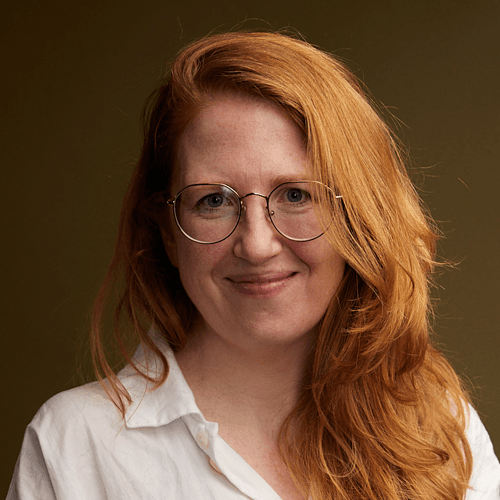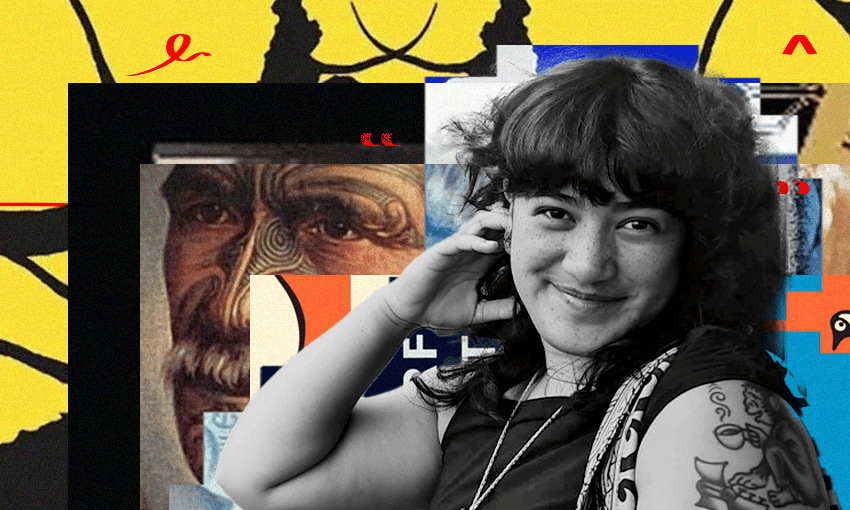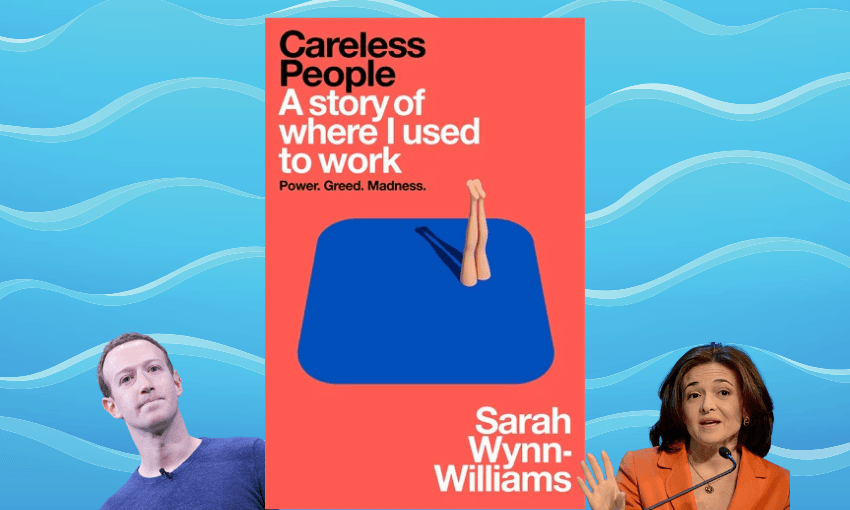Hit Netflix series Adolescence has sparked conversation about reading the internet versus reading novels. What is the state of teen reading in Aotearoa? And what are the books that might lure our boys back to the page?
One of the many questions the profoundly effective Adolescence has raised is the gulf between what worlds the young men of today have access to compared to what their parents had before them. The show’s writer, Jack Thorne, articulated it in the Guardian: “Writing it [episode three], I was shocked at how much of Jamie I had in me. His pain, his anger, contains sides of me I didn’t want to see. He comes from a good background, like me; he’s a bright boy, like I was. The key difference between us? He had the internet to read at night whereas I had Terry Pratchett and Judy Blume.”
While one of the points of Adolescence was not to arrive at a single cause for 13-year-old Jamie’s violence, it’s stark to see Thorne state so clearly how the untold damages of reading the wilds of the internet has all but replaced the self-contained, knowable, and slow entertainment of reading books.
And we are far from safe from subbing in one slow culture for another much faster one down here in Aotearoa, where an atmosphere of violence relating to the “manosphere” is bubbling. Last week, libraries called on local and central government to help protect them from increased instances of violence like the storming of Te Atatū Library by members of Destiny Church’s Man Up group. On March 17, the boy who killed 16-year-old Enere Taana-McLaren at the Dunedin bus exchange was convicted of manslaughter: he was just 13 years old when the crime took place. And earlier this week, The Spinoff’s Toby Manhire reported a poll revealing that Trump Lads are abundant in this country, too.
It’s a tall order to ask books to cure the manosphere and the proliferation of misogyny and violence. It’s impossible to turn back; and until lawmakers assist with the clamping down of access to dangerous online spaces, and book culture is celebrated and supported by those in power, it’s difficult to fathom how the hungry beast of the online world can be curbed. But with effort both individual and collective there can be a swing back towards books that resonate with young men, that can entertain them as much as reveal to them narratives of support and hope and empathy.
Alan Dingley is Aotearoa’s most recent Te Awhi Rito Reading Ambassador. His job for two years was to talk to young people about books, about reading and about their own lives as storytellers. Dingley relates strongly to Thorne’s observations of reading books versus reading online. “When I was younger … we used books to create the world around us, and we learned empathy and connection within those pages. Whereas today they [teenagers] don’t get to make up their own minds, to form their own judgements. It’s all thrown at them and we have no idea what will stick, and what the repercussions may be.”
There isn’t much research delving into gender and reading habits among New Zealand teenagers. But anecdotally, and across general research both here and internationally, it’s widely considered a challenge to encourage teenage boys (more so than girls) to maintain a regular practice of reading for pleasure. Wellington College’s English department learning area lead, Sarah Marchant, says that their Year 9 boys often to go high school with some well established reading habits (largely fiction in the sci-fi and fantasy genres) that are nurtured through the school’s reading engagement programme, library visits and silent reading. But a lull sets in around Year 10 which continues until at least Year 12.
Marchant says some of her colleagues have stopped setting extended texts as part of their learning programme because they can’t get the boys to read them. Dingley too has observed a lull: “There was a surge with things like Harry Potter, Alex Rider, Cherub, Percy Jackson, but I think since Percy Jackson we don’t really have that series that’s captured the imagination, especially for the boys.”
The research we do have articulates that a practice of reading for pleasure among kids and teenagers has long-term benefits. “Pop culture and online content currently shapes their self-image, and how they see others,” says Dingley. “We must find a way in.”
Research has also shown that a key element to developing book culture is choice. Teenagers are more likely to read books they’ve chosen themselves. Not revelatory information, perhaps, but it may prompt parents and caregivers into methods of simply placing a book around the house, or asking someone your teenager thinks is cool to make reading recommendations to them.
But before we even get to the recommendations there are other crucial factors that any adult around teenagers has to consider if they want to help them develop a reading culture:
- Modelling reading: one of the reasons teenagers are living inside the internet is that adults are too. We have to model reading as an activity if we want our teenagers to follow suit. Marchant (Wellington College) confirms they’ve definitely seen that when whānau model reading at home their sons are more likely to read themselves.
- Time: like busy, working adults, teenagers are also under a lot of time pressure. School, social lives, sport, arts, sleep – it all requires time. Carving out time to read is essential both at home and at school. There’s a movement towards device-free evenings (say, one a week to start with) which can help prioritise analogue activities over digital ones for the whole household.
- Variety: closely related to choice, mentioned above. Teenagers need to be allowed to read what speaks to them. The main thing is it needs to be in print, or on audiobook or e-book, and outside of the lure of the internet. All forms of literature should be celebrated including graphic novels, biographies of people they admire, crime novels, sci-fi, thrillers, horror, comedy and fantasy. We shouldn’t exclude newspapers and other forms of print journalism either.
- School libraries and librarians: there is no better time to show support for beleaguered school libraries and the school librarians who are facing budget cuts and closures throughout Aotearoa. School libraries are experts in contact with teenage readers and potential readers and are charged with curating books and creating safe spaces. Now is the time to lobby those in power who we know value reading.
The following list is a stable of books that have time and time again proven to hit the mark with teenage boys. The list has been gathered from a variety of sources including from Unity Books (thanks to bookseller Eden Denyer who specialises in young adult readers), Alan Dingley, personal recommendations gathered from Spinoff staff, and research into bestsellers with longevity and resonance.
Book recommendations for teenage boys
General notes: Unity Booksellers have observed that there is a trend among their older teenage boy customers (16+) for books by bestselling proponent of Stoicism, Ryan Holiday; and for business books like The 48 Laws of Power by Robert Greene, Rich Dad Poor Dad by Robert Kiyosaki and Sharon Lechter, and Radical Candor by Kim Scott. In fiction, Unity staff have noticed that that same age group gravitate towards classic fiction by George Orwell and Dostoevsky (who, thanks to TikTok, is having another moment). These are fascinating observations in themselves.
Alex Rider by Anthony Horowitz
Alex Rider is a teenage spy, working for M16. There are 14 novels, seven graphic novels, and seven short stories. They’re action-packed, fast-paced and a huge hit with teenagers all over the world. It’s Bond for younger generations: addictive, charismatic and will get the blood racing.
A Monster Calls by Patrick Ness
Patrick Ness is also author of the Chaos Walking trilogy – a thrilling, complex book staring Todd, a questing, troubled teenage hero. A Monster Calls is a standalone novel about 13-year-old Conor O’Malley who is struggling to cope with his mother’s illness. It’s a brilliant, emotionally rich novel about anger, devastation and grief. It’s not easy reading but it is an extremely cathartic story that pays attention to emotions that can be central to adolescence and are underrepresented in art at large.
Bear by Kiri Lightfoot
New Zealand writer Kiri Lightfoot has written a narrative similar to A Monster Calls: Jasper struggles with his family situation, with how he feels in the world, and anger gets the better of him. Funny, moving and another narrative that pays attention to overwhelm, stress and how to cope with it.
Dune by Frank Herbert
The books have had a resurgence in popularity thanks to the sleek film franchise. Unity Booksellers are finding that Dune goes down well with teenage customers who are into sci-fi, adventure and complex narratives.
Eragon by Christopher Paolini
Eragon is the first in The Inheritance Series, a hugely successful fantasy world of dragon riders, rival kingdoms, battles, magic, betrayals … they’ve been compared to the worlds of Tolkien and Martin as well as Star Wars. Great for teens who love worldbuilding, fantasies and complex plots.
Forgive Me, Leonard Peacock by Matthew Quick
The Spinoff’s Lyric Waiwiri-Smith recommends this novel with the following thoughts and advice: “This young adult novel deals with some very heavy topics such as suicide and sexual abuse, but when I read as a very lost teenage girl, I was struck by how much perspective it gave me through a rough period. The protagonist, a disturbed teen boy named Leonard, has plans to take his own life and the life of his best friend, and through the novel’s pages you unravel the traumas which paved the way to this point, and Leonard’s path to recovery. This book deals with some really hard subject material that won’t be suitable for all young boys, but it’s still equal parts jarring and hopeful.”
Jasper Jones by Craig Silvey
This novel was a huge hit for Australian writer Craig Silvey. It’s a hard-hitting, but ultimately hopefully, coming-of-age story about Jasper and Charlie who make a shocking discovery and have to help each other navigate the aftermath of it. There are extremely difficult subjects (suicide, rape, racism) at the heart of the book so do take care, but Silvey’s handling is deft.
Hyperion by Dan Simmons
Another Unity Books recommendation is this sci-fi masterpiece. Here’s the blurb: “On the world called Hyperion, beyond the reach of galactic law, waits a creature called the Shrike. There are those who worship it. There are those who fear it. And there are those who have vowed to destroy it. In the Valley of the Time Tombs, where huge, brooding structures move backward through time, the Shrike waits for them all.
On the eve of Armageddon, with the entire galaxy at war, seven pilgrims set forth on a final voyage to Hyperion seeking the answers to the unsolved riddles of their lives. Each carries a desperate hope–and a terrible secret. And one may hold the fate of humanity in his hands.”
Percy Jackson by Rick Riordan
Riordan’s creation is one of the biggest publishing sensations of our time. There are five books in the original series, two more in the senior years series, as well as spinoff graphic novels, special editions and companions. The premise is that 12-year-old Percy Jackson discovers he’s the son of the god Poseidon and thus a demigod who must then attend Camp Half-Blood where he and other demigods like him learn how to deflect the monsters, Titans and other gods who would like to finish them all off. Entertaining, educational, absorbing.
Migration by Steph Matuku
Steph Matuku is one of Aotearoa’s great writers for young people. Migration is her latest book and a young adult novel sci-fi about Farah who is desperate to attend the legendary Western Wānanga where Aowhetū’s best military fighters are trained. It’s a brilliantly fresh take on the “school for gifted/magical teenagers” trope and explores themes of fighting for your people, your place and yourself.
One of Us is Lying by Karen M. McManus
Essentially a crime novel set in a high school and starring teens, this is one of the books that Wellington College staff have noticed is very popular among their students. Here’s the blurb: “Five students walk into detention. Only four come out alive. Yale hopeful Bronwyn has never publicly broken a rule. Sports star Cooper only knows what he’s doing in the baseball diamond. Bad boy Nate is one misstep away from a life of crime. Prom queen Addy is holding together the cracks in her perfect life.
And outsider Simon, creator of the notorious gossip app at Bayview High, won’t ever talk about any of them again.
He dies 24 hours before he could post their deepest secrets online. Investigators conclude it’s no accident. All of them are suspects.”
Red Rising Saga by Pierce Brown
Compared to The Hunger Games and Game of Thrones, this series is set on Mars in a future where humans have managed to colonise it and set up a complex and problematic society that we journey into through the eyes of 16-year-old Darrow. A great series for the sci-fi fans who are after immersion, and narratives of uprising, rebellion and factions fighting factions.
The Murderbot Diaries by Martha Wells
A seven-book series starring a cyborg who has failed in her purpose of being a killing machine. A brilliantly realised sci-fi world with a compelling lead character searching for the meaning of life. Here’s the blurb for Volume 1 which is made up of two novellas that set up the world: “On a distant planet, a team of scientists are conducting surface tests, shadowed by their Company-supplied ‘droid — a self-aware SecUnit that has hacked its own governor module, and refers to itself (though never out loud) as “Murderbot.” Scornful of humans, all it really wants is to be left alone long enough to figure out who it is (and to watch its favorite show in its downtime.)
But when a neighboring mission goes dark, it’s up to the scientists and Murderbot to get to the truth.
Then, In Artificial Condition Murderbot teams up with a Research Transport vessel named ART (you don’t want to know what the “A” stands for), and together, they infiltrate the mining facility where Murderbot went rogue to try to understand its past.
What it discovers will forever change the way it thinks…”
Neal Shusterman’s books
Neal Shusterman’s books are hugely popular with teenage audiences. He writes compelling dystopias that are thought experiments tackling big themes and big questions. Titles to check out include: Scythe (the first in a series set in a world where advanced medical care means it’s impossible to die unless you’re professionally killed by Scythes); Game Changer (about Ash, who starts to shift into multiple realities and has to question everything he knows); Unwind (a startling dystopia set in the near future after a ‘Second Civil War’ which resulted in the practise of teenagers being unwound … having your body parts harvested). Shusterman is appearing at Auckland Writers Festival’s schools programme in May, and in Wellington with Verb Wellington to do a schools, and public event.
Ready Player One by Ernest Cline
The book behind the Spielberg film and another popular read among Wellington College students. This is a high-action thriller set in a world immersed in VR. Pitched incredibly well to gamers, coders, and thrill-seekers.
Someday This Pain Will be Useful To You by Peter Cameron
Another great recommendation from Lyric Waiwiri-Smith: “This is another YA novel that focuses on a protagonist who feels quite lost in life, mostly due to the fact that life itself is just incredibly confusing. Protagonist James is a recent high school graduate who on the one hand is struggling to accept his sexuality, and on the other hand, massively disillusioned by the sameness of life he perceives, so much so that he is willing to forgo an acceptance to an Ivy League university. The message of this book is so true: ‘someday this pain will be useful to you’. Hindsight is a perspective that you’re not always blessed with as rangatahi.”
Stephen King’s books (or some of them)
The king of horror novels can be brilliant for teen readers craving immersive, highly compelling, nerve-wracking stories with real thematic heft underneath. Carrie (the legendary high school story about telekinesis, bullying and revenge), Salem’s Lot (returning to childhood haunts, literally), The Shining (creepy hotel), Pet Sematary (traumatised land), IT (nightmare clown), Different Seasons, and the Bachman Books (Dingley recommends these two for their explorations of anger and said that for him as an angry teen it was eye-opening). and The Gunslinger (the first in a thrilling dystopian quest) are all broadly considered suitable for older teen readers, though of course, take care!
Stickboy and To This Day by Shane Koyczan
Dingley recommends these books by viral poet and inspirational speaker Shane Koyczan, which are beautiful rallying cries against bullying that can help reframe ideas of self-value, beauty and vulnerability. Koyczan’s TED Talk, To this day, is readily available on YouTube and is a brilliant, moving watch.
The Absolutely True Diary of a Part-Time Indian by Sherman Alexie
Now a classic of American literature, this semi-autobiographical books is recommended by Dingley for its exploration of belonging and navigating life as an indigenous person in a colonised world. Here’s the blurb: “Sherman Alexie tells the story of Junior, a budding cartoonist who leaves his school on the Spokane Indian Reservation to attend an all-white high school. This heartbreaking, funny, and beautifully written tale, featuring poignant drawings that reflect the character’s art, is based on the author’s own experiences. It chronicles contemporary adolescence as seen through the eyes of one Native American boy.”
The Chocolate War by Robert Cormier
Alan Dingley recommends this hugely influential novel from 1974 set in an all-boys Catholic high school because of its superbly handled themes of conformity, bullying and violence. Here’s the blurb: “The headmaster of Trinity College asks Archie Costello, the leader of the Vigils, a secret society that rules the school, to help with the selling of 20,000 boxes of chocolates in the annual fund-raising effort. Archie sees the chance of adding to his power – he is the Assigner, handing out to the boys tasks to be performed if they are to survive in the school. Freshman, Jerry Renault, a newcomer to the corrupt regime, refuses to sell chocolates. Enormous mental and physical pressure is put on him but he will not give in – the result is an inevitable, explosive tragedy.”
The Crossover by Kwame Alexander
Dingley recommends this graphic novel told in verse (also available in verse form only) for its theme of family relationships. “With a bolt of lightning on my kicks . . .The court is SIZZLING. My sweat is DRIZZLING. Stop all that quivering. Cuz tonight I’m delivering,” announces dreadlocked, 12-year old Josh Bell. He and his twin brother Jordan are awesome on the court.
But Josh has more than basketball in his blood. He’s got mad beats, too, that tell his family’s story in verse, in this fast and furious middle grade novel of family and brotherhood from Kwame Alexander. Josh and Jordan must come to grips with growing up on and off the court to realize breaking the rules comes at a terrible price, as their story’s heart-stopping climax proves a game-changer for the entire family.”
The Enemy Series by Charlie Higson
Higson is a huge name in fiction for tweens and teens. The Enemy series is a stack of post-apocalyptic horror novels in which a sickness has taken out all of the adults and turned them into zombies. It’s a cracking, addictive, cinematic series that appeals to fans of dystopian worlds, sci-fi and zombies.
Tomorrow, When the War Began by John Marsden
The late, great John Marsden’s series has been captivating teenagers since the early 90s. The Spinoff’s Gabi Lardies highly recommends this epic series: “The books are narrated by Ellie, a teenaged girl who lived in a small rural town in an undisclosed part of Australia. When she and a group of friends get back from a weekend camping trip, she finds her parents are missing, their dogs are dead and the power is out. Australia has been invaded. Together the teens hide from the enemy, survive and eventually become guerrilla fighters in the war.
Marsden wrote a whole group of realistic and resonant teen characters, from the salt-of-the-Earth Ellie, to the loveable doofus Homer and the slightly fragile prissy Fi. Like all good characters none are perfect, but they are – or become – resourceful, brave, persistent and resilient. They forgive each other’s shortcomings. Throughout the series the teens navigate friendship, periods and sex on top of all that comes with war like violence, death and loss. Still, there are fun and sweet moments between the characters – it’s not all blood. These books are beloved by many for good reason.”
Turncoat by Tīhema Baker
One of the big sci-fi hits of the last few years right here in Aotearoa, Baker’s gripping, funny and revelatory alien-invasion novel is a brilliant exploration of what it feels like to exist within a colonised world. Read The Spinoff’s review by Shanti Mathias, here.
Violet Black by Eileen Merriman
Prolific writer Eileen Merriman’s Black Spiral trilogy (Violet Black is the first book) is a fast-paced, future-world sci-fi in which super-human teenagers have to fight the sinister Foundation. Merriman’s Eternity Loop series follows on from Black Spiral and starts with Indigo Moon which is just as addictive.






